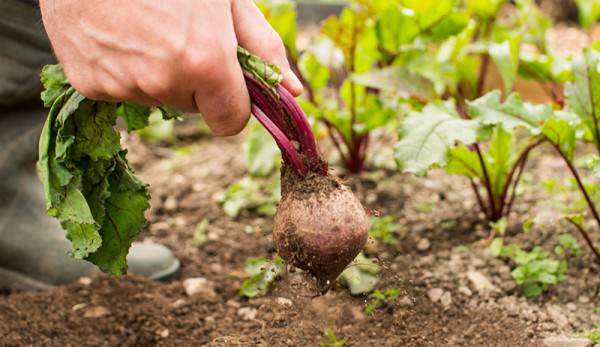
Why am I eating eight oranges for breakfast this morning? I like oranges but not that much. Unfortunately, the nutritional value of an orange has been declining. Today, it is necessary to eat eight oranges to acquire the same amount of Vitamin A that one orange provided our grandparents, according to a 2011 article in Scientific American magazine, a leading authority for science and technology information. In fact the University of Texas in Austin reported “reliable declines” of the vitamin and mineral content of 43 vegetables and fruits.
So, where did the nutrition go anyway?
The root of the problem lies in the soil.
The nutrient balance of soil has been depleted from the shift in agriculture practices. Over the last half-century, small family farms lost ground to industrial farming. In the 1970s “Get big or get out,” was the war cry heard from the USDA led by Secretary Earl Butz. The migration to massive farms plowed under sustainable practices, such as rotating crops, fallow periods for land, and the use of compost and cover crops. Chemical pesticides and fertilizers became the growing power of industrial farming, but these practices have a downside: Food designed for profit overtook food for nutrition and flooded the grocery shelves.
Fortunately, public demand for nourishing food is driving the change back to food grown for nutrition, and backyard gardeners and urban and small-scale farmers are learning that nutritious food begins with healthy soil.
“Soil must be teeming with life. The ultimate goal is to build up the soil—with organic matter, minerals and beneficial organisms,” says Calvin Bey, Ph.D., a retired scientist with degrees in forestry and genetics.
Bey grows nutrient-dense, organic food at Harmony Gardens in northwest Arkansas, which evolved from his mission to live in harmony with the laws of nature.
“Everything in nature is connected,” he contends. “Plants, like people, are designed to be healthy. Healthy soil grows a healthy plant that yields healthy people. Insects and disease are the appropriate response to stressed plants, while weeds are a barometer of soil health.”
At Harmony Gardens, Bey tutors gardeners on the basics of growing nutritious produce. He defines nutrient-dense produce as food containing high levels of minerals with the appropriate nutrient balance. Plants grown in toxin-free soils with the ideal mineral and organic matter conditions will be nutrient dense.
The first step in cultivating nutritive fruits and vegetables is to understand soil conditions.
“Test your soil,” Bey instructs.
Soil tests, which are available through many cooperative extension offices, provide an accurate picture of the nutrient availability in the soil. Soil is tested for the pH (acidity or alkalinity), the Cation Exchange Capacity (ability of soil to store a group of nutrients), the nutrient availability of 11 different nutrients, as well as fertilizer and lime recommendations. This information will provide an accurate guide for adding the correct minerals and micronutrients to build the right nutrient balance. If soil testing is not available in your area, there are three alternative testing labs where samples can be mailed: Logan Labs in Ohio, International AG Lab in Minnesota and Timberleaf Soil Testing.
“All three provide a complete picture of your soil’s nutrient status and complete recommendations,” Bey says.
After the soil test, he recommends gardening in raised beds to promote aeration, better drainage and faster soil warm-up in the spring, as well as reduce compaction. He highly encourages “Three Top Principles” to rebuild depleted soil:
- Use minimum tillage: Rototilling disrupts soil organisms, leads to soil compaction and opens up surface area for weeds to sprout.
- Keep the soil covered at all times: Mulches and cover crops protect the soil from erosion and add organic matter.
- Promote diversity: Avoid monocropping by intermingling flowers to attract pollinators and beneficial insects.
Nutrient-dense fruits and vegetables require soil bursting with life from nutrient balance, organic matter and high levels of multiple minerals. Chemical fertilizers supply only nitrogen, phosphorus and potassium in a non-organic form, which are heavy in salts that burn the soil. Insects and disease attack weaker plants, a natural law. Healthy plants have a higher level of disease resistance. Chemical pest controls kill not only the bad insects, but also the good insects and microorganisms resulting in weaker plants. Minimal tillage, ground covers and mulches safeguard the soil and supplement organic material. Broken, out-of-date agricultural practices have exhausted the soil.
The good news is lifeless soil can be resurrected by sustainable gardening practices that are simple to implement and promise healthy, wholesome food capable of energizing our bodies, minds and spirits.




